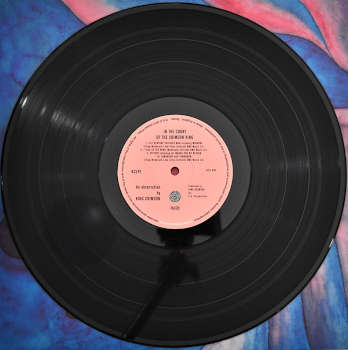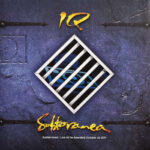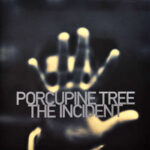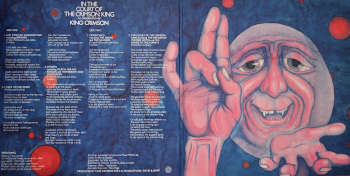In The Court Of The Crimson King by King Crimson
King Crimson
„In The Court Of The Crimson King“
Progressive Rock. Reisue, Remaster, Black Vinyl. 2010 (1969)
They say no prog head can ignore King Crimson's 1969 debut album. For a long time, I kept my distance from KC (King Crimson), and I still do. But that doesn't apply to "In The Court Of The Crimson King." It's somehow timeless and demonstrates the direction of early progressive rock in the '70s. So, it's a good example to shed some light on the technical side of prog rock. I'll spare you any interpretations of the paranoid, surreal lyrics.
King Crimson was founded in 1968 by Robert Fripp and Michael Giles. With Fripp as its mastermind, it continued in various formations until 2009.
"21st Century Schizoid Man" oscillates between jazz and hard rock. The stylistic shifts and the rhythmic breaks are typical of progressive rock. Distorted vocals and guitars characterize the opening. The middle section is designed as a so-called unison run. This gave the song a great dynamic, which was unusual for the time. It is precisely this dynamic that draws me into the song. The precision of the individual instruments is fascinating.
"I Talk To The Wind" is an idyllic interlude with flutes that connects the dynamic first song to the hymn-like song that follows. This is the only song not entirely in a minor key. Wonderfully gently played, yet never boring.
"Epitaph" is the hymnic conclusion of Side A and is characterized by the frequent use of the Mellotron. The text and the music form a unified whole. Again, I'm amazed by the ease of precision.
Side B begins with the ballad "Moonchild." Robert Fripp is now dissatisfied with the improvised part of the song. I tend to agree with Fripp. And yet, improvisation is one of the stylistic devices of early progressive rock. In neo-prog it's virtually unheard of.
Like "Moonchield," "In The Court of the Crimson King" is built on pure triads, common chord progressions, and cadences. Vocals, lyrics, and instruments are all in harmony. Its concept also forms a successful conclusion to the album.

My forays with King Crimson always end with the band's early phase. The subsequent albums are too cerebral and improvisational for me, marking the first dead end that progressive rock reached after 1975/76. Even more improvisation, even more elitist (a terrible conceit), even longer solos, even more flourishes here and there. Often, the meaning of an album fell behind these elitist vanities.
None of this applies to "In The Court Of The Crimson King," and so for many, 1969 marked the beginning of progressive rock, and it's not without reason that the album ranks quite high in various rock charts. Likewise, many elements can be found in other bands (Genesis, Yes), such as the use of the Mellotron, surrealist lyrics, and broken rhythms. The timelessness of this album and its playfulness, in particular, keep me listening to it again and again. A milestone? Definitely.
The photos are all from my LP. The rights to all motifs, logos, texts and fonts that can be seen in the photos are of course owned by the copyright holder.




